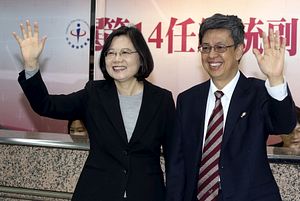With just weeks to go before Election Day, Taiwan’s voters are on the verge of handing the Democratic Progressive Party (DPP) a landslide victory. The DPP’s presidential candidate, Tsai Ing-wen, is leading in the polls by double digits, and her party is within range of becoming the majority party in Taiwan’s legislature. Such an outcome would make the DPP Taiwan’s true ruling party for the first time in history (its first successful presidential candidate, Chen Shui-bian, governed from 2000 to 2008 without a supportive legislature).
For most of the past 70 years, Taiwan has been ruled by the Kuomintang (KMT), the party led by Chiang Kai-shek and, in the democratic era, presidents Lee Teng-hui and Ma Ying-jeou. Giving the DPP the opportunity to form a government is a profound change of direction for Taiwan’s voters, so it’s worth considering the question: Why?
The simplest answer is that it is normal for parties in a two-party system to alternate leadership, and there is more than a little truth to that response, but an unprecedented shift to an all-DPP government merits a deeper explanation.
































